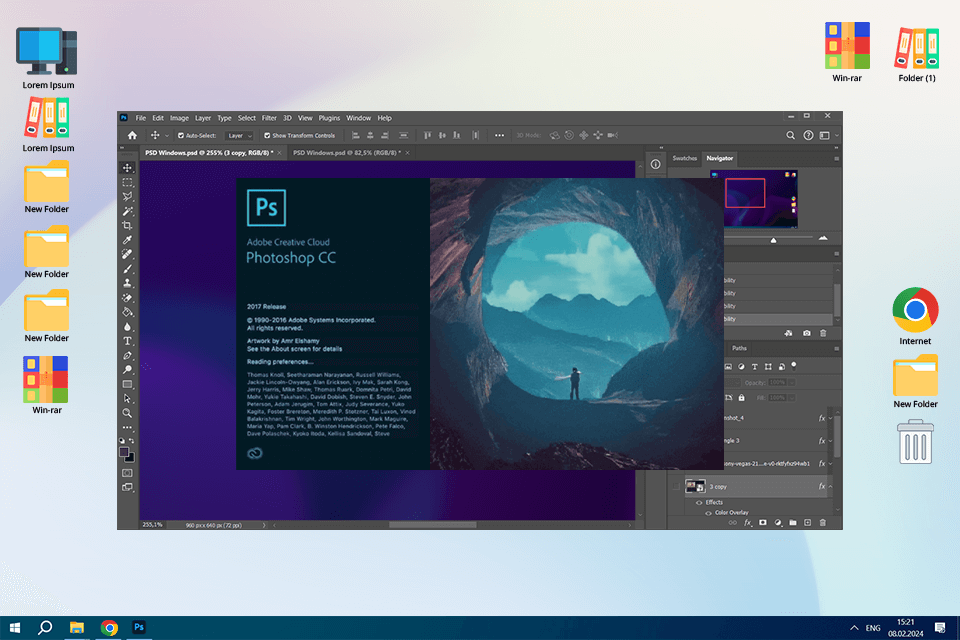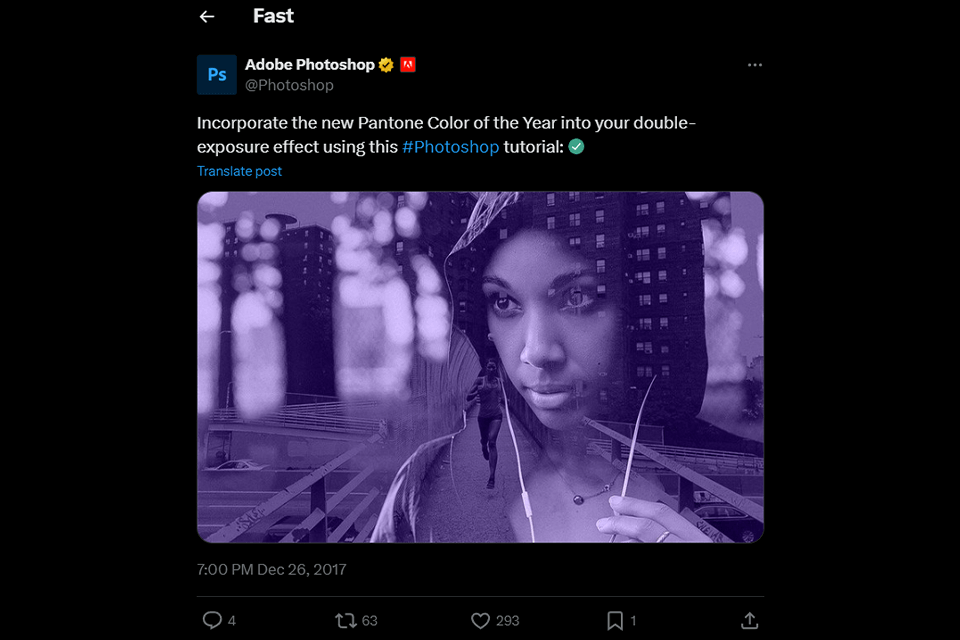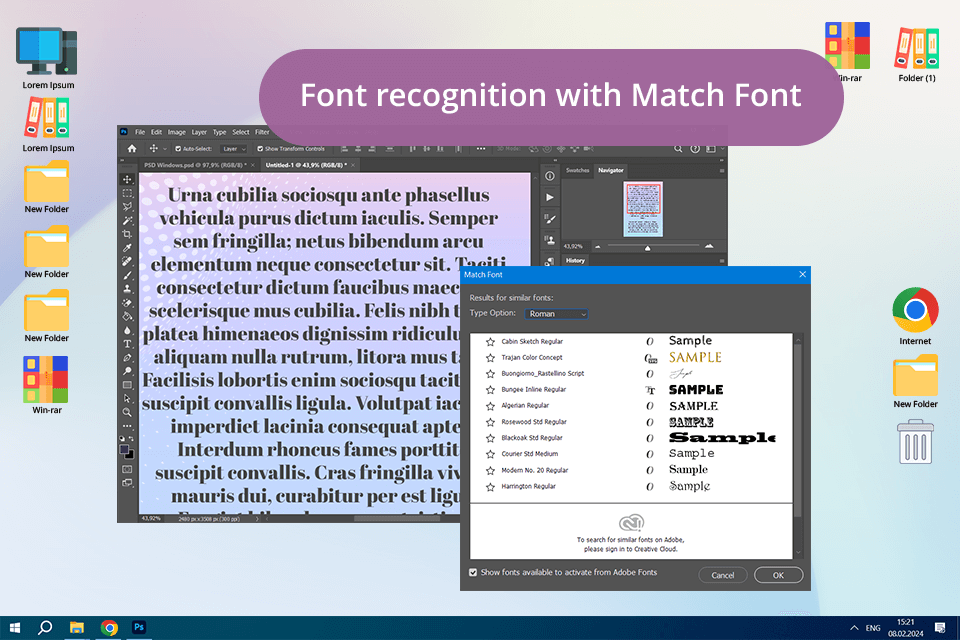Working as a retoucher at FixThePhoto, I had the opportunity to try out Adobe Photoshop CC 2017 (v18.1.6) before it was officially launched. I explored its features while editing beauty portraits for my colleague Tatiana. Based on my experience, this version is definitely a major upgrade, offering something valuable for both seasoned professionals and novices.
Before I started using Photoshop CC 2017 (v18.1.6), I mostly worked with such Photoshop version as CC 2015 for my editing and design projects. CC 2015 handled many tasks well, but some tools didn’t work as effectively as I expected them to. For example, the Quick Selection Tool wasn’t very precise, especially when working on tricky details like hair or lace in fashion photos. This made me look for a better version.

|
File name:
|
photoshop_2017_win7.exe (download)
|
|
File size:
|
225.6MB
|
|
File name:
|
photoshop_win8.exe (download)
|
|
File size:
|
254.8MB
|
|
File name:
|
photoshop_2017_win.exe (download)
|
|
File size:
|
286.2MB
|
|
File name:
|
photoshop_2017_win11.exe (download)
|
|
File size:
|
281.3MB
|
|
File name:
|
photoshop_2017_mac.dmg (download)
|
|
File size:
|
1.1GB
|
|
File name:
|
photoshop_2017_mac.dmg (download)
|
|
File size:
|
1.1GB
|
|
File name:
|
photoshop_2017_mac.dmg (download)
|
|
File size:
|
1.2GB
|
|
File name:
|
photoshop_2017_mac.dmg (download)
|
|
File size:
|
1.2GB
|
|
File name:
|
photoshop_2017_mac.dmg (download)
|
|
File size:
|
1.3GB
|
|
File name:
|
photoshop_2017_mac.dmg (download)
|
|
File size:
|
1.4GB
|

✔️ Advanced Select and Mask workspace. One of my favorite features in Photoshop 2017 (v18.1.6) is the Select and Mask workspace, which replaced the old Refine Edge tool. This photo editing software for PC makes it easier to select tricky areas like hair and fur with better accuracy. This feature was a game-changer for me as a portrait retoucher, as saved me much time on detailed edits.
✔️ Faster and smoother performance. This update caused significant speed improvements, especially when handling large files and intricate PSDs. High-resolution rendering and filter applications felt more fluid, minimizing workflow disruptions.
✔️ Font recognition with Match Font. With the release of Photoshop 2017 (v18.1.6), the Match Font feature was first introduced, enabling users to recognize and replicate fonts straight from images. This option is invaluable for branding projects, where maintaining font consistency is essential.
✔️ Top-notch Creative Cloud Libraries. The improved Creative Cloud Libraries made it easier to manage and share assets across devices and teams. Syncing commonly used items like brushes and color themes became much more straightforward, which is a huge advantage for teams that are working together.
❌ Complex learning curve. For those just starting out, tools like the Select and Mask workspace and other advanced features might seem a bit complicated at first. Although they are highly effective, getting comfortable with them takes patience and practice, which can be challenging for newcomers.
❌ Minimal updates to 3D tools. While Photoshop has been improved in many areas, its 3D features stayed mostly the same. Designers who focus on 3D work might find this version to be not so functional compared to dedicated 3D modeling software.
If you are looking for a tool with more sophisticated 3D capabilities, take a look at the Top 3D Modeling Software List offered by FixThe Photo.
After working in Adobe Photoshop CC 2017 (v18.1.6), I defined some areas that could be improved:

If the cost of a full Photoshop 2017 license is more than you can afford and you are not ready to risk a pirated version of the software, there are several more budget-friendly alternatives you can explore.
One of the initial programs I tested was GIMP. At first, it felt similar to Photoshop CC 2017, featuring tools like layer masks, blending modes, and custom brushes. I was surprised by how many advanced features this free tool offers, and its smooth performance across Windows, macOS, and Linux was a major advantage.
Although the interface wasn’t as polished as Photoshop and felt a bit overwhelming at first, I eventually got used to it. After a while, GIMP became my go-to for advanced editing tasks, offering powerful features at no cost.
Photopea proved to be a game-changer for quick, on-the-go edits. As this is a browser-based tool, no installations were required, making it especially handy for travel. What impressed me most was its seamless compatibility with PSD files, allowing me to process them effortlessly.
Photopea vs Photoshop showed that I could easily open my Photoshop files in the first tool, edit them, and save the changes seamlessly. Although it lacks some of the more advanced features of Photoshop, it’s perfectly suited for basic editing needs, and its user-friendly interface made the transition a breeze.
When I wanted to try creative projects like digital painting, I found Krita. This open-source free drawing software became my favorite for creating illustrations. The brush tools are amazing and can be customized in many ways. I also liked its clean and easy-to-use interface, which felt simpler than GIMP’s.
While Krita is more oriented to artists, I think it is a great option for photo editing as well. If you love mixing art and editing, Krita is definitely worth your attention.
Another tool I explored was Pixlr. It provides two distinct versions: Pixlr X for straightforward edits and Pixlr E for more sophisticated tasks. I found the platform to be highly intuitive and accessible, especially for beginners. Its AI-driven features, such as automatic background removal, significantly streamlined my workflow saving much time.
Whether I used Pixlr on my laptop or phone, it worked smoothly and was easy to use. However, Pixlr vs Photoshop showed that it’s great for quick edits but not as capable when working on complex projects or large files. For more advanced tasks, tools like Photoshop are better.